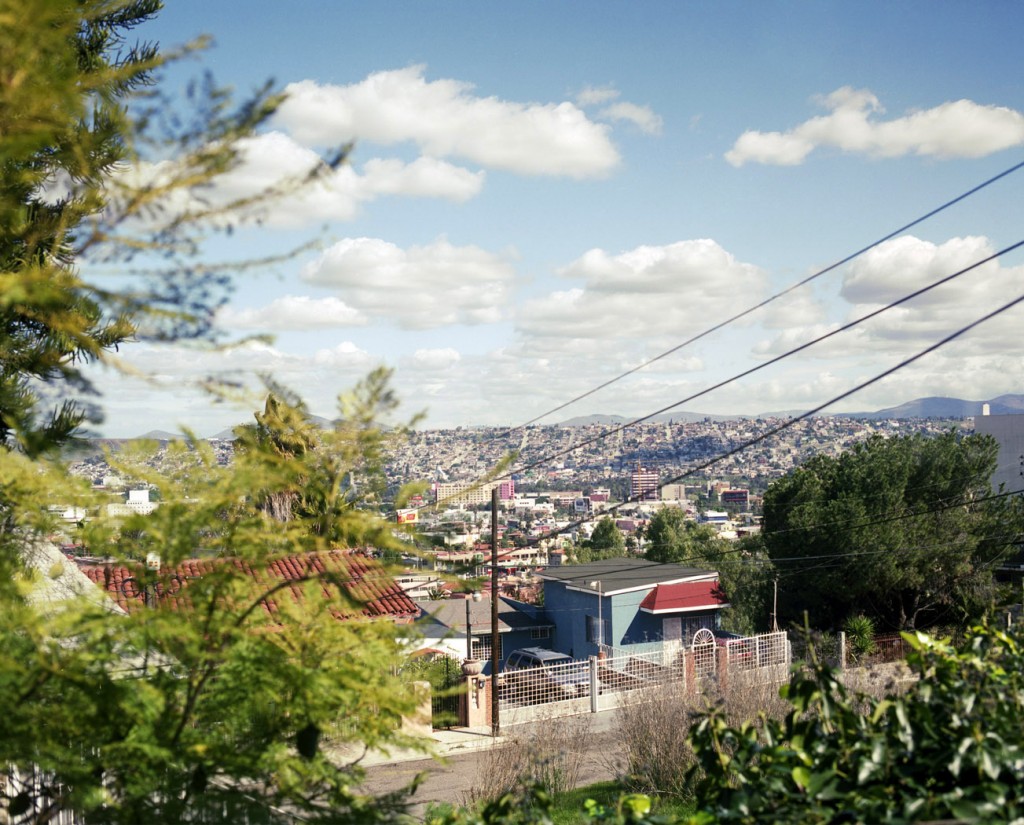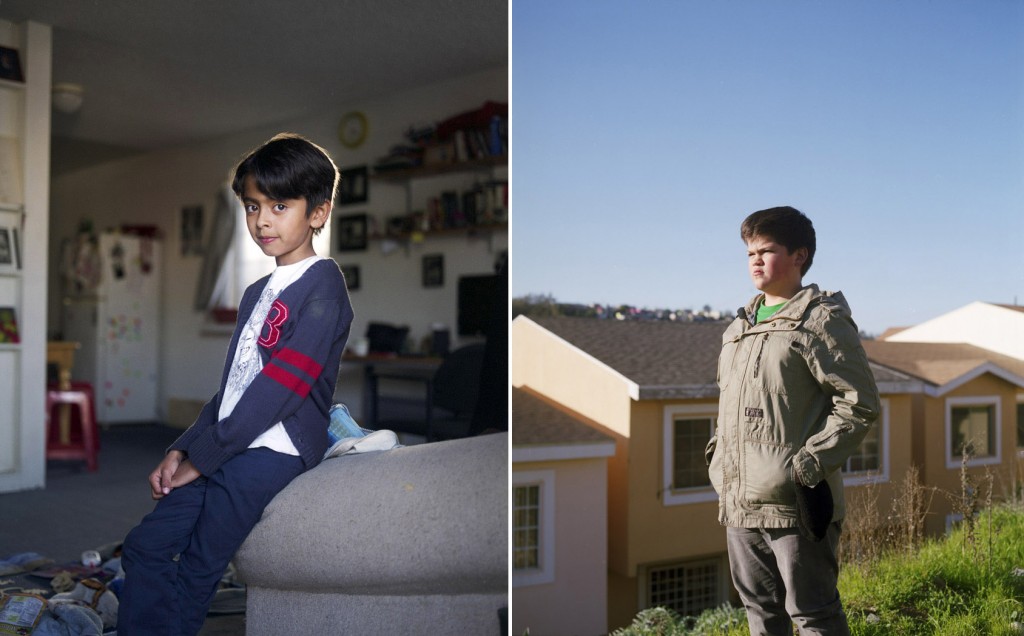
© Alejandro Cartagena. From the series Born in the USA.
1. You have been photographing on film, especially large format film, since your early works over a decade ago and are still adept at it today, as shown in your ongoing series Born in the USA: have your film-based artistic practices changed since you started, and if yes how?
Not so much. I still use the same films (Fuji 100 Reala and Fuji Provia) and have the same workflow for retouching the scans. I might not spend as much time in post as I have gotten better in the scan process. I think what changed was the implication of using film today and approaching the subject. To shoot with film for me know represents a way to tell the people that I am not here to take a picture and hurry out and do some type of harm to them. The state of violence and insecurity in many Mexican cities is still present and that threat blows up when you want to shoot a stranger or a stranger’s place, so the use of “slow photography” opens people heart to get involved and cooperate.
2. For most people, the recurring question on the topic of the film medium is why? Why photographing on film in 2013? What would your answer to them be (besides why not )?
As I mentioned before it has become a confidence buster, but really I love the idea of not having a zillion images from where to pick from and I still feel the rendering of color and sharpness is more beautiful with film.

© Alejandro Cartagena. From the series Born in the USA.
3. As a successful 21st C. photographer, you also photograph digitally since 2011, at which time you got your first professional DSLR. How do you rationalize photographing on film VS digitally?
I bought my first digital in 2007, and at first I wasn’t shooting much stuff with it. When I started to think of doing my personal work with digital in 2011, I still tried to play the game of doing few shots and that made me feel good. For the Car poolers project I only shot 1 or 2 frames of each truck. No burst mode, just plain simple, you got it or not. So basically I still try to shoot as if it where film, but sometimes I can´t help myself and get digital diarrhea.
4. You live in Monterrey, Mexico and often travel the entire country (and abroad) for assignments and commissioned projects: how is the film photography industry doing now in Mexico? Do you still find easy access to photographic labs and analog photography stores at home? Is there a locale or country you know of where film photography is particularly thriving?
There isn´t much of an industry and that has some good and bad things to it. One good thing is that the equipment is cheaper, as people are getting rid of it. Bad because supplies are sometimes unavailable, but I usually work with Fuji´s distributer and make orders in advance. There is a new lab called Give Film a Chance (http://givefilmachance.blogspot.com/) that is creating a market again for film. I hope they survive! I also buy a lot of stuff in the US and cross the border to get it. The hardest is the development of the 4×5 sheets. There is only one guy that does it, so he usually won’t develop my stuff until it is a worthwhile batch.

© Alejandro Cartagena. From the series Car Poolers.
5. How do you see the future of film photography? In what ways can it remain a relevant – if only artistic – medium?
I think it is still strong and will be strong for some time. High-end digital cameras are way to expensive right now and do not offer a solution to us photographers on a budget. Since I do my scanning in house, I save a lot of cash and it is still manageable to do. I guess what happened to Kodak is sad, but they said they will continue to produce their film stock, and Fuji has not shown any “big” signs of cutting us of. After working for 5 years scanning a film archive that ranged from 1864 to mid 20th century, I just can´t believe film can die!
6. FOTOFILMIC is dedicated to promoting the new generations of photographers attached to film today: what essential advice or recommendation would you have for them?
I would say to them that they should figure out if slow shooting is their thing, and if so to embrace that opportunity to have more concentrated shots.
7. What have you been up to recently? Any recent achievements, projects, news?
I have continued to shoot images for my project Born in the USA in towns of the US-Mexico border. I´ve been doing that with a Mamiya RB67. I recently received the Juror´s choice award at Photoville The Fence in NYC and a grant to publish the Car Poolers project, so hopefully that will come out some time next year.
8. If anything was possible, what would be your next ultimate project photography-wise (or else)?
If I told you, I´d have to kill you.

© Alejandro Cartagena. From the series Between Borders.
________________
FotoFilmic’s new FILM TALKS series is all about sharing experienced views, artistic endeavors, industry outlooks and how to reshape the contemporary practices at the center of the film photography medium today. FILM TALKS invite advanced artists, independent publishers, photo editors and art dealers, as well as the broad creative crowd of visual arts to engage in insightful dialogues with FotoFilmic about film photography in all aspects.